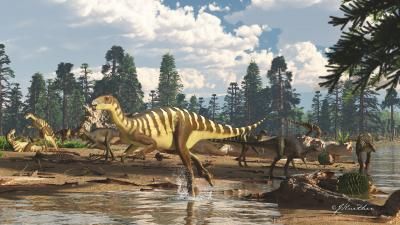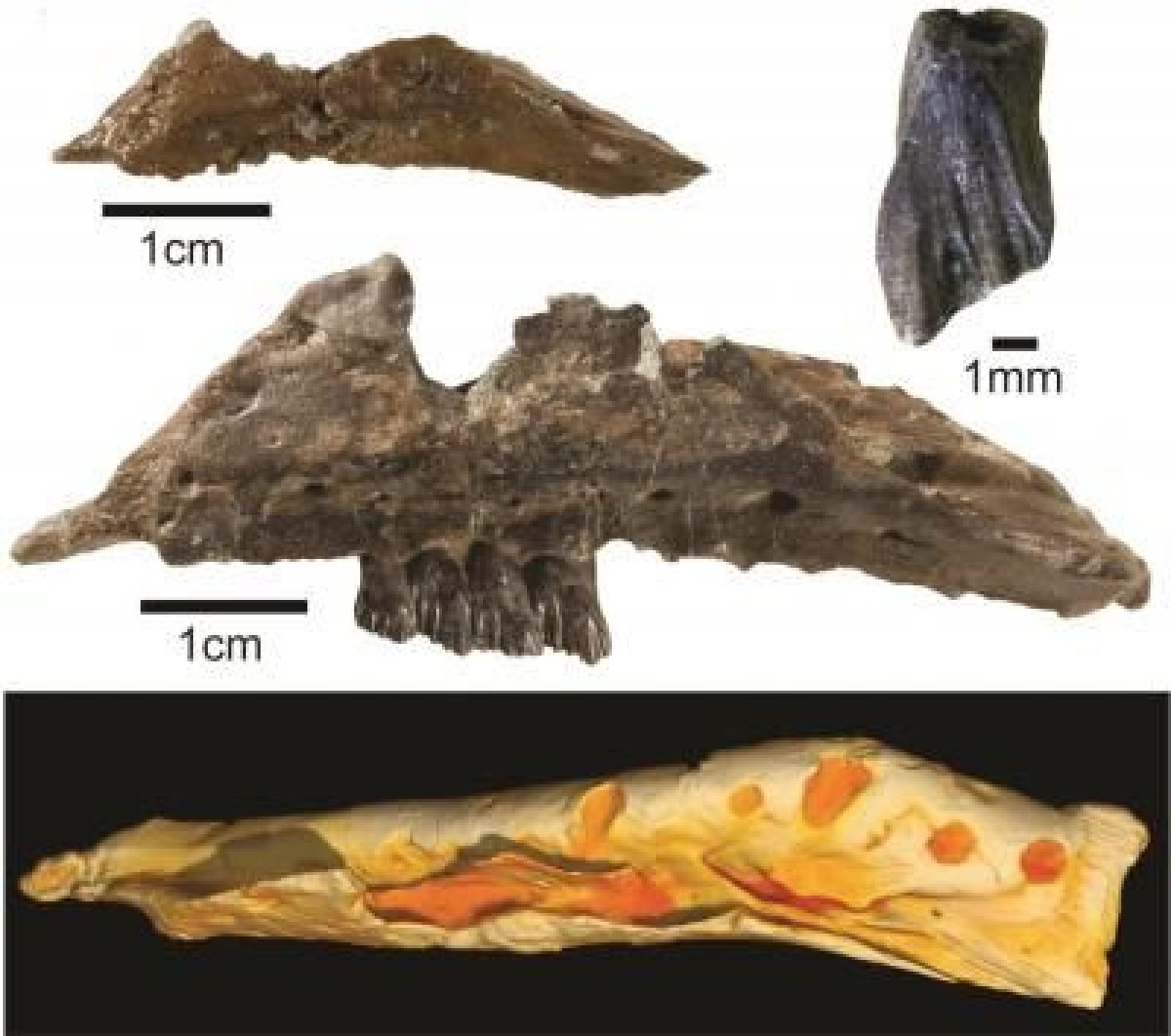
A wallaby-sized dinosaur that lived 125 million years ago in an ancient, long-lost rift valley has been discovered in Australia. The species, which has been named Galleonosaurus dorisae, was identified from five ancient jaw bones found in rocks unearthed at the Wonthaggi Formation of the Gippsland Basin—a geological region dating to the Cretaceous period (about 145 million to 66 million years ago.)
At this time, Earth's continents were drifting around. At the start of the Cretaceous period, the land was split into two huge continents, known as Laurasia and Gondwana, with the latter dominating the southern hemisphere. But they were starting to split up, with South America breaking away from Africa. By the end of the Cretaceous period, the landmasses had mostly broken up into the continents we know today.
When Galleonosaurus walked the Earth, a rift valley existed between Antarctica and Australia. Along this rift—which is now the eastern margin of the continent of Australia—were miles of actively erupting volcanoes. Sediments from these volcanoes were carried down huge rivers, where dinosaur bones and fallen foliage were mixed in—creating sedimentary basins that show life on Earth at the time.
"This land has now vanished, but as 'time-travellers' we get snapshots of this remarkable world via the rocks and fossils exposed along the coast of Victoria," Matthew Herne, from the University of New England, Australia, said in a statement.
Speaking to Newsweek, he added: "The rift valley was lengthy—up to 1,800 miles—with the southern half inside the Antarctic polar circle. However, the region would have been climatically much warmer than the present-day polar climate. So much so that small dinosaurs, turtles, small mammals, small birds, flying reptiles, lungfish and aquatic reptiles, called plesiosaurs, all flourished in the rift environment."
Herne said the landscape was a forested floodplain with large rivers and shallow lakes. "The canopy trees would have been families that are still present in Australia and South America—conifers related to Bunya pines, Monkey Puzzles and Huon pines. Early flowering plants [were also present], as well as many kinds of ferns and horsetails.
"Eventually, the sea encroached on the rift valley as Australia and Antarctica spread further apart. About 45 million years ago the land of the rift was completely severed by what would become the Southern Ocean."
Herne, together with colleagues, discovered the new dinosaur in 125-million-year-old rocks from southeastern Australia. They found jawbones of young-to-mature individuals belonging to a species not previously recognized. Details of the discovery have been published in the Journal of Paleontology.
The team say Galleonosaurus dorisae would have been a small-bodied herbivorous dinosaur. It belonged to a family called ornithopods. Galleonosaurus is the fifth ornithopod from the region, indicating it was a highly diverse type of dinosaurs that thrived along the rift valley.
"These small dinosaurs would have been agile runners on their powerful hind legs," Herne said. "[The discovery of Galleonosaurus] confirms that on a global scale, the diversity of these small-bodied dinosaurs had been unusually high in the ancient rift valley that once extended between the spreading continents of Australia and Antarctica."
Researchers say the new species is closely related to Diluvicursor pickeringi—another small ornithopod found in the area last year. "However, Galleonosaurus is about 12 million years older than Diluvicursor, showing that the evolutionary history of dinosaurs in the Australian-Antarctic rift had been lengthy," Herne said.
The team also said these ornithopods are closely related to similar creatures found in Patagonia, providing a crucial insight into how dinosaurs moved around the planet before the Gondwana broke up. "Our phylogenetic analysis … suggests the ornithopods of the Australian-Antarctic rift discovered in Victoria are more closely related to small-sized ornithopod species from Patagonia than with other ornithopods from places like North America or China.
"This apparently close relationship tells us something of the historic connections between Australia and South America, via Antarctica during the Cretaceous period."

Uncommon Knowledge
Newsweek is committed to challenging conventional wisdom and finding connections in the search for common ground.
Newsweek is committed to challenging conventional wisdom and finding connections in the search for common ground.
About the writer
Hannah Osborne is Nesweek's Science Editor, based in London, UK. Hannah joined Newsweek in 2017 from IBTimes UK. She is ... Read more
To read how Newsweek uses AI as a newsroom tool, Click here.








